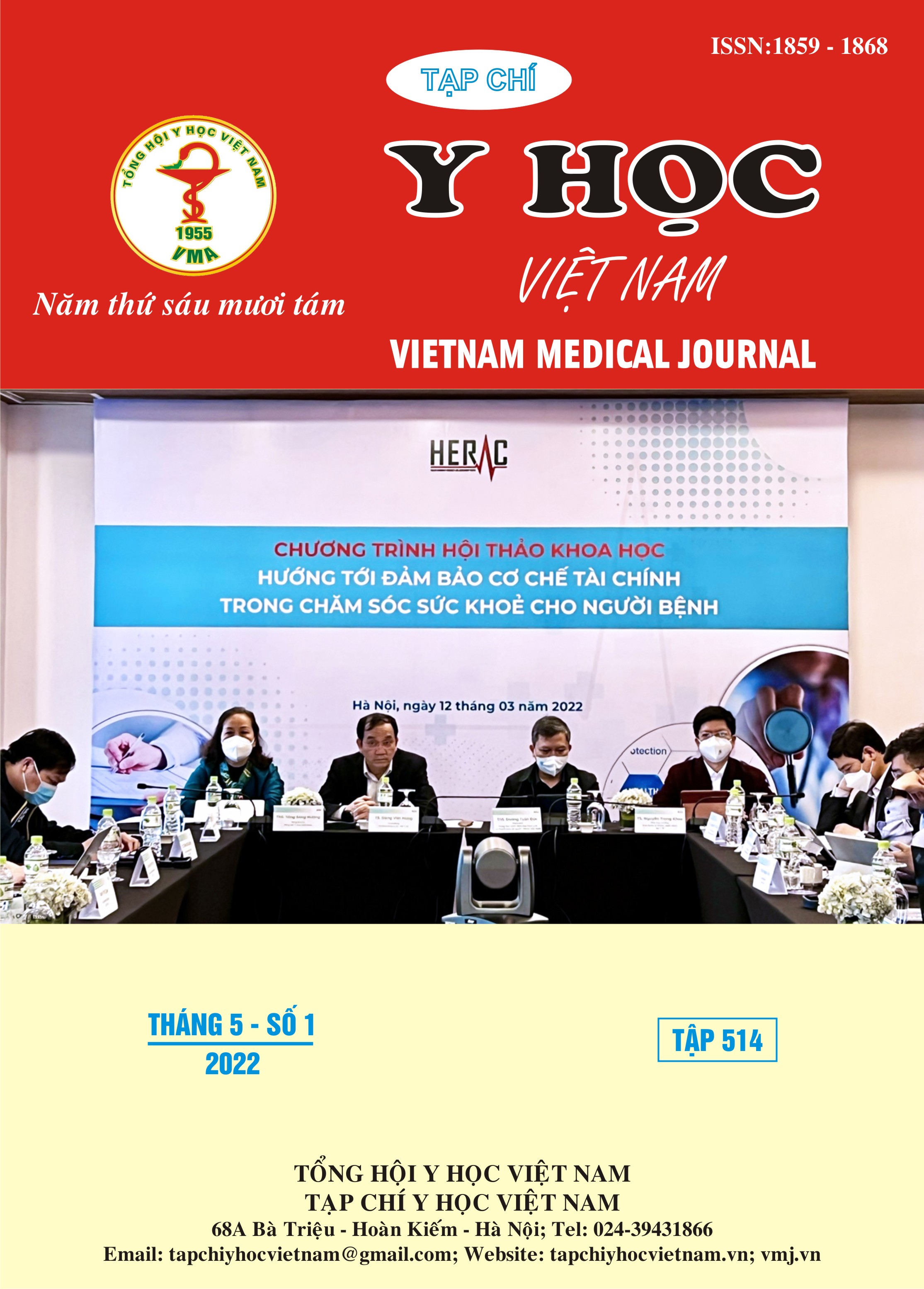SHORT-TERM OUTCOMES OF HEPATECTOMY FOR HEPATOCELLULAR CARCINOMA AT BACH MAI HOSPITAL
Main Article Content
Abstract
Objectives: The research aimed to evaluate some of the clinical characteristics and short-term outcomes associated with hepatectomy for hepatocellular carcinoma (HCC). Methods: We conducted a retrospective study with a sample size of HCC confirmed by pathology. From April 2016 to April 2019, the patient underwent open hepatectomy at Bach Mai Hospital. Results: The study enrolled a total of 67 patients. The mean age was 56.3 years (30–76). The male/female ratio was equal to 6.4/1. Clinical symptoms of pain in the right upper quadrant, lack of appetite, and weight loss were prevalent in 83.6 %, 41.8%, and 17.9% of participants. The mean concentration of AFP in serum was 635.1 (2.09 - 3968) ng/mL. Patients with AFP levels of less than 20, 20 - 400, 401 - 1000, and >1000 ng/mL were 47.8 %, 23.9%, 22.3%, and 6%, respectively. The average tumor size on the CT scan and specimen was 5.4 (2.7 – 8) and 5.3 (2.5 – 8.5 cm, respectively. Tumors in stages I, II, and III accounted for 17.9%, 62.7%, and 19.4%. 85.1% of all were minor liver resections. Selective hepatic pedicle control and Pringer maneuver were 55.2% and 44.8%, respectively. Hepatic parenchymal resection with Ligasure, Kelly + Ligasure, and Kelly was 67.2%, 22.4%, and 10.4%, respectively. Eight patients required blood transfusions, accounting for 11.9 %. The mean blood transfusion was 542.9 mL (250 – 700). The average operative time was 132.1 minutes (90 - 195). Complications after surgery were 17.9%, of which pleural effusion, liver failure, and biliary leak were 13.4%, 1.5%, and 0%, respectively. After surgery, the average hospital stay was 12.8 (6-38) days. Conclusion: Clinical symptoms are not specific. The patient was indicated for surgery with good liver function. Computed tomography revealed that the tumor was massive, with typical HCC characteristics. Liver resection is an effective and safe treatment.
Article Details
Keywords
Hepatocellular carcinoma, liver tumor, liver resection, computed tomography, complications
References
2. Thành LV. Đánh giá phẫu thuật cắt gan trong ung thư biểu mô tế bào gan tại bệnh viện K. Tạp chí Y học Thành phố Hồ Chí Minh. 2010:217-22.
3. Huy NĐS. Phẫu thuật cắt gan điều trị ung thư biểu mô tế bào gan tại Khoa U gan Bệnh viện Chợ Rẫy 2010-2015. Tạp chí Y Dược lâm sàng 108. 2016;11:82-8.
4. Balzan S. BJ, Farges O. The "50-50 criteria" on postoperative day 5: an accurate predictor of liver failure and death after hepatectomy. Annals of surgery. 2005;242(6):824-9.
5. BJ, Noun R.,Malafosse R. Continuous versus intermittent portal triad clamping for liver resection: a controlled study. Annals of surgery. 1999;229(3):369-75.
6. NA, Abo T.,Hamasak K. Predictors of intraoperative blood loss in patients undergoing hepatectomy. Surgery today. 2013;43(5):485-93.
7. HJX, Dai W. D.,Miao X. Y. Anatomic resection of segment VIII of liver for hepatocellular carcinoma in cirrhotic patients based on an intrahepatic Glissonian approach. Surgery. 2009;146(5):854-60.
8. JB, Wang Y.,Wang, G.,Liu Y. Curative resection of hepatocellular carcinoma using modified Glissonean pedicle transection versus the Pringle maneuver: a case control study. International journal of medical sciences. 2012;9(10):843-52.


